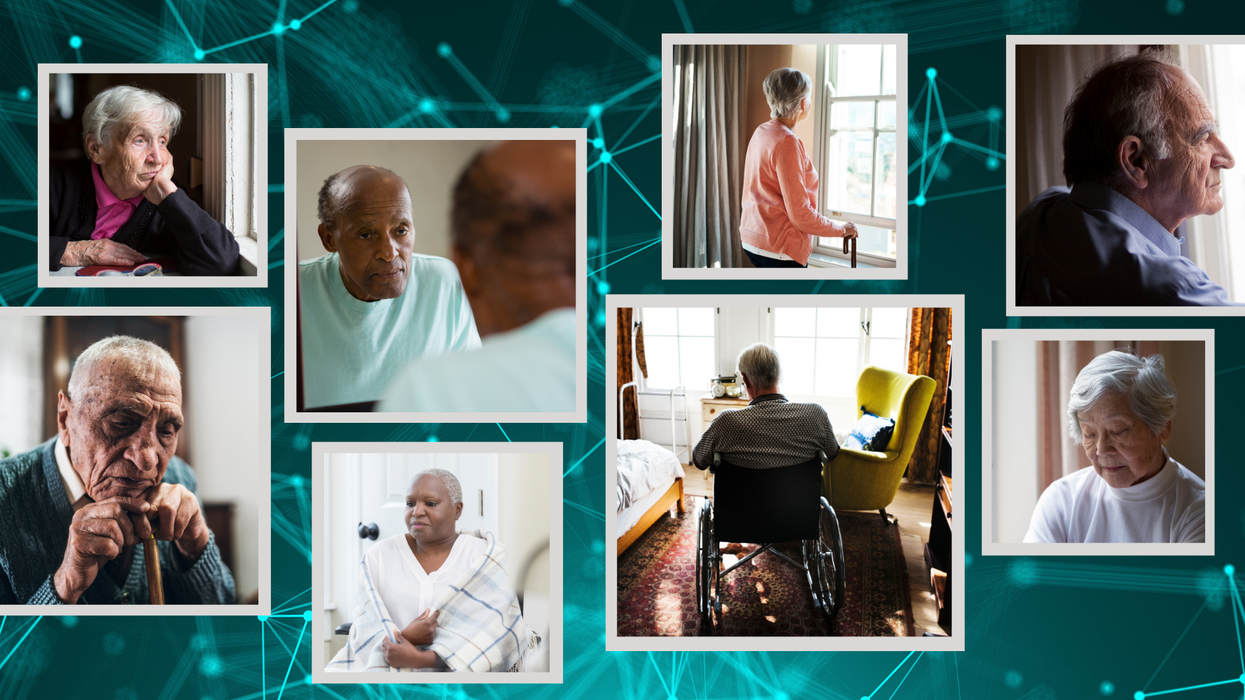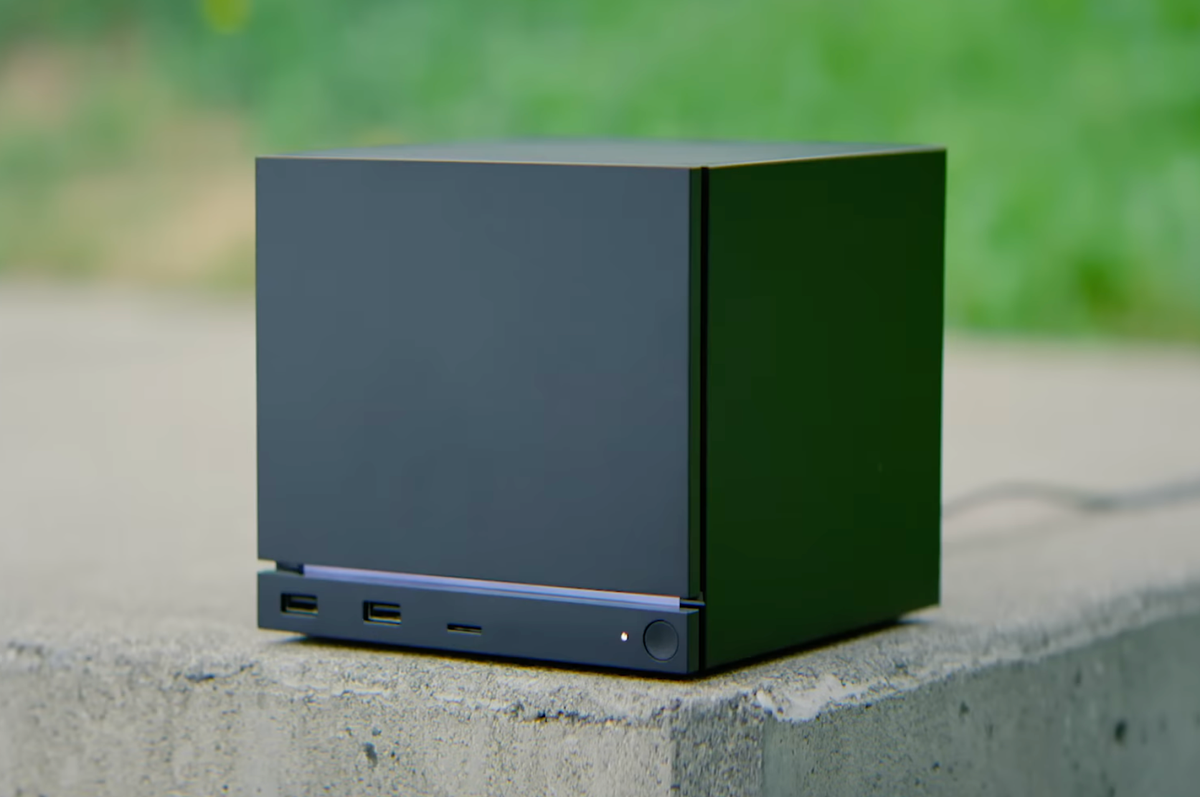Moya Lothian-McLean
May 18, 2020

by Moya Lothian-McLean
Lawrence Rudd had only been living in his residential home for six months when Covid-19 broke out.
At 85 years old, the methodist minister was still active, with a buzzing social life, but had begun to struggle with stairs, his granddaughter Elle recounts. A decision was made for Lawrence to move into a flat in a local supported living community for the elderly; residents stay in their own self-contained housing, with a warden living on site for support. The set-up allows much-needed independence – but also can exacerbate isolation, explains Elle.
“He doesn’t really talk to anyone there,” she says of her grandfather. “There’s irregular social activities put on, maybe a communal fry up once a week but because people are supposed to be living independently there’s no overwhelming presence of scheduled events”.
This suited Lawrence at first; he was busy enough as it was. As a minister, Sundays were the highlight of his social calendar but on various nights of the week he could be found out and about in the small Worcestershire town where he lives, sharing a pint with friends or having dinner with members of his congregation.
Like so many others, lockdown has upended Lawrence’s life and confined him to the four walls of his flat. But his loneliness is particularly acute, says Elle, because his care home doesn’t provide internet access.
For adults living in residential care homes, particularly those over 70 and deemed high-risk by the government, existing isolation is currently exacerbated. Not only are they unable to see family properly, with most care homes suspending visits altogether, for many residents the virtual means of communication the rest of the UK has turned to are also out of reach.
Video calling, DMing and email are options taken for granted by most of us, who have taken to Zoom quizzing and scheduling weekly family Skype calls with a fervour. But for a large number of care homes, a lag on going digital has caught up with them during the current pandemic, resulting in a desperate scramble to catch up and connect lonely residents to the outside world.
According to carehome.co.uk, the leading care home review site in the UK, only 35 per cent of the 17,769 homes listed on their public database provide internet access for residents. A 2019 survey carried out by the company also found that one in five care workers said their homes didn’t have any wifi either. It means thousands of adults living away from loved ones are now essentially marooned. The emotional impact for both individuals in care and their families can be devastating.
For the residents living in Lawrence Rudd’s residential community, wifi has to be individually installed in their flats and paid for out of their own pocket. Lawrence’s family are currently in the process of remotely trying to guide him through the steps necessary to set him up a broadband router, a task that would be relatively simple if they weren’t in the midst of a pandemic. As it is, Lawrence is struggling.
“Obviously we want to set him up with the internet so he can go online and talk to people, be less bored and lonely,” says Elle.
“But he can’t find the point to connect the router. He’s quite a bit of a Luddite; we got him a mobile phone and a tablet a couple of years ago but he was reluctant to learn how to keep in touch via FaceTime and texts until he moved into the home. But now we obviously can’t show him how to use it”.
Lawrence doesn’t like asking for too much help, his granddaughter says.
Like many elderly people, he is keen to hold onto his independence and not be written off by society. But his loneliness during this crisis is palpable.
“He will never admit it but we can tell he’s very lonely by the way he talks to us,” Elle says. “He calls us so often and wants us to go visit him every day. But we can only drop off food, with two metres distance, which he doesn’t really understand so he tries to talk to us and we have to back up.”
The family is convinced that an internet connection will be a lifeline for Lawrence.
“We do a family pop quiz every two weeks that’d he be able to join,” Elle explains. “He also likes crosswords; we can send him ones to do online. Then there’s his church community – he could go to the Zoom church every Sunday and reach out to members of his congregation which is really important to him. Then there’s films, books and just being able to see the family. We just need to get this sorted for him, quickly.”
Internet access is a “lifeline” for care home residents, says Deborah Mason. Mason would know; she’s communications manager for Magic Me, a UK arts charity that creates and facilitates intergenerational projects, linking adults over 60 and children over eight in shared, creative activities.
Magic Me’s programmes are stimulating, joyful – and usually delivered in person. In the wake of lockdown, initiatives like Cocktails in Care Homes, which tackled isolation in 18 residential care homes via volunteer-led cocktail parties, have ground to a halt. Now Magic Me is tasked with filling the hole via remote means.
The obvious answer would be to go digital, employing virtual resources, but a lack of internet connectivity (Mason estimates only two of the care homes Magic Me work with provide internet access to residents) means that Magic Me has instead had to get even more creative than usual.
The solution is solid: a project called The After Party, which sees a rotating cast of artists lead accessible creative actions for participants, like creating a postcard for a loved one they’re missing from household items. But Mason tells me that the lack of internet proves a significant challenge.
Yet it’s not the only connectivity problem facing the care sector that’s been thrown into sharp relief by Covid-19.
Even homes that do have internet access face obstacles, like a shortage of devices for residents to use and a scarcity of staff who have the time or training to fully assist residents with their technological needs.
That isn’t to say carers don’t want to help – they do. Many, Mason says, recognise the radical impact technology can have on the lives of those they care for. But understaffed homes, already stretched to breaking point as they try to hold back the tide of potentially devastating Covid-19 outbreaks, do not always have the numbers on hand to implement the necessary structural change to bring permanent access to all their residents.
Instead, there’s a lot of well-meaning ad hoc attempts to connect people as and when the opportunity arises.
Seymour has been separated from his 86-year-old father for six weeks since lockdown began. Since then, Seymour has been able to video chat with his dad – who has multiple sclerosis and what Seymour describes as “complex needs” – twice. Both instances were via a care worker's phone.
Seymour says there’s no devices for individuals provided by the home and the booking scheme residents and families can use to request time on the communal laptops has, understandably, come under great strain as a deluge of worried relatives attempt to contact their loved ones.
“I’ve turned in some requests for time on the laptops but the staff haven’t been able to get around to, which I understand,” Seymour says. “In lieu of that a lot of the time, I’ll get contacted by one of the care workers because they’ve got my number, and they’ll say ‘do you want to speak to your dad, he’s asking to talk to you’. Then they’ll do a WhatsApp call and have to leave their personal phone with my dad while he speaks to me”.
Contact with his dad is welcome, but the infrequent and random nature of it often leaves Seymour with conflicted feelings.
“It’s better than nothing,” he says.
It’s really lovely to see him because I miss him a lot. I used to see him regularly and going from that to not having a lot of contact, you feel paralysed inside. The care home gives updates when they can but you can’t hear any more than that. So to have the contact is lovely.
“But when it’s infrequent and it’s digital, so he doesn’t quite understand how it works, it reinforces that distance as well, so it can make it quite painful afterwards. It makes me miss him more.”
While device donations by a generous public seem like an easy answer to this problem, in reality it's not that straightforward.
Secondhand equipment can’t be accepted. Devices have to be PAT-tested to make sure they’re safe to use, and compliant with regulations. Brand new boxed devices are fine but then comes the issue of a network to run them on. Deborah Mason suggests that 4G routers, like the ones being supplied to disadvantaged students across the country to support online learning, or devices with pre-paid 4G plans, may actually prove more useful than simply installing wifi.
However, both the hurdles Seymour has experienced in chatting to his father – device shortage and his dad’s struggle in quite getting to grips with real-time video chat – are ones that care provider Somerset Care thinks it have the solution for.
Formed in 1991, it’s a non-profit organisation overseeing 26 nursing and residential care homes as well as homecare and learning disability services. Somerset Care has long been ahead of the curve when it comes to the digital world – 15 years ago, at the behest of a tech enthusiast CEO, it began looking into how it could use tech to combat isolation in their residents.
But it was teaming up with Exeter University in 2013 that really lit a fire under their existing approach. Named ‘Ages 2.0’, the project examined the impact access to a computer and social media could have on reducing loneliness and isolation in the elderly.
The answer, it soon emerged, was: a sizable one, with people’s feelings of belonging, self-competence and general wellbeing all receiving a hefty boost, along with an increase in cognitive capacities.
The outcomes were too positive to ignore, says Jason Shaw, Somerset Care’s technology lead. Soon every facility under the organisation’s banner received brand new blanket wifi coverage, device supplies and regular visits from a dedicated care technologist, who provides staff training on not only the ‘how’ of using tech with residents but the ‘why’.
Demonstrating to staff the benefits tech would have for their residents proved to be the key to the success Somerset Care has enjoyed in implementing their digital policy. And in the wake of Covid-19, they’ve turned to a new app to ensure residents are able to stay in touch with their families: RelsApp.
Developed specifically for care homes, the premise of RelsApp is simple: someone sends a missive – like a video, photo or text message or a piece of evocative music – to their loved one. Carers in the home will receive a notification that the resident in question has a new message from their centralised app. They can then show them the message and send one in return. The recorded system makes things more efficient and removes the ticking clock of real-time calls, says Jason, especially with relatives living abroad or who have busy schedules.
Although Somerset Care was initially piloting RelsApp, when the pandemic hit it decided to go full steam ahead. It’s been rolled out across four homes already, with more to follow. Even they’ve been blown away by its success.
“It’s amazing,” says Sue, register manager for a 92-bed mixed service Somerset Care home. Her residents are aged from 60 to 103 and include people living with dementia. Four weeks ago, they closed the home and so far have been spared from the unwelcome arrival of Covid-19 (“Knock on wood,” says Sue).
But with visits suspended, Sue and her staff have been fighting to keep the morale of their charges up. RelsApp, she says, has been revolutionary, with 83 out of her 92 current residents signed up.
“Every day a member of staff will go around and deliver RelsApp messages to residents. It’s just so emotionally brilliant, especially for the people with dementia. They don’t recognise and communicate like you or I but put a RelsApp message on and they’ll recognise that person’s voice and that their loved one is talking to them. It feels as though they’re there.
It’s reduced anxiety for families too – there’s been a decrease in phone calls. It’s just been an absolute godsend and staff are excited using it too.
Sue tells me of one resident, a woman living with dementia who moved into the home just one week before lockdown, leaving her husband of 69 years at home. “Sixty-nine years. That’s a lifetime, isn’t it?” Sue says, her voice breaking.
The woman was set up with RelsApp; last week carers sent a video to her husband of his wife making cornflake cakes.
“People with dementia don’t forget these basic skills of life,” says Sue. “She knew exactly what she was doing with her cooking. So we filmed that.”
Overnight the resident’s husband messaged back.
“I was there when we took the RelsApp message to this lady,” Sue says. “It was out of this world. The gentleman sat there talking to her about how she’d made these cakes the day before and then was talking about things they’d done during their marriage and with their children.
“It was so emotional; he was crying. It was him connecting with his wife of 69 years. But if it hadn’t been for RelsApp, he wouldn’t have been able to have that conversation. The expressions on her face – because she can’t communicate in the same way – she recognised his voice. She was listening to his voice. Her body language was just totally content”.
It’s not just RelsApp. Thanks to their connectivity, in recent weeks the people living in Sue’s care home have enjoyed virtual birthday parties and were even able to remotely attend the funeral of a long-time resident who died of non-Covid-19 causes.
As a manager of a care home, Sue hopes other organisations in the space will similarly recognise the incredible role technology can play in connecting her residents to their lives outside the residence and is puzzled when it comes to the slow take up across the board.
When families ask her what Christmas presents would be best for their loved ones, she always advises a tablet if they’ve got the funds.
“It’s so powerful,” Sue says of the positive impact the digital world has had on her elderly residents, calling the care sector’s renewed focus on embracing tech one of the rare “positives” of the Covid-19 crisis.
“What would we have done without technology over the last six, seven weeks? I just don’t know”.
Top 100
The Conversation (0)













